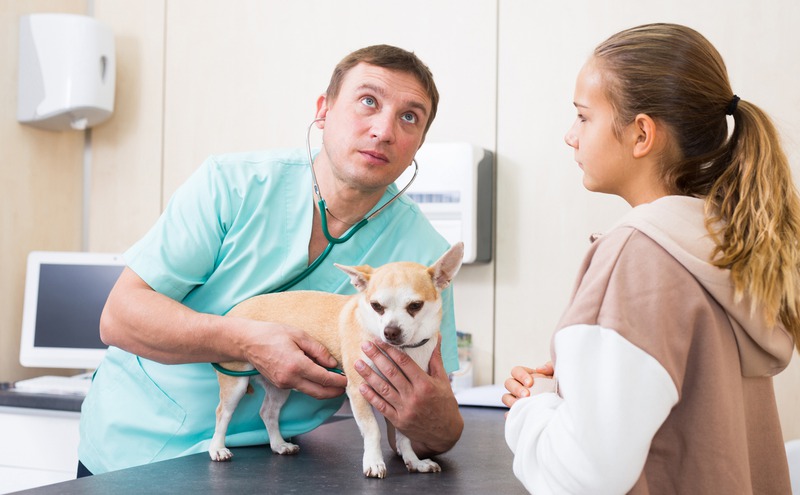What Post-Surgery Care Should Your Sterilized Pet Receive?

If you’ve recently had your beloved furry friend undergo a sterilization procedure, kudos to making that responsible choice. Now, it’s time to focus on the aftermath – ensuring a smooth and comfortable recovery for your pet. You might be wondering what exactly post-surgery care should look like, right? Not to worry, we’ve got you covered with some helpful advice on how to care for your sterilized companion. We’ll walk through everything from the moment you pick them up from the clinic to the joyful day they’re back to their playful selves. So, sit back, take notes, and let’s help your pet bounce back to good health.
Post-Surgery Care Essentials
The road to recovery for your pet begins with proper post-surgery care. Whether you’ve had your cat sterilized or you’re caring for a pooch post-op, there are a few key steps you’ll want to follow. These steps will help minimize pain, reduce the risk of infection, and ensure a swift healing process.
The Recovery Timeline
First things first, it’s essential to realize that recovery isn’t a one-size-fits-all situation. Each pet is unique, and several factors, such as their age, size, and overall health, can influence how they bounce back. Generally, though, you’re looking at a recovery window of about 10-14 days for most pets. During this time, your vigilance and care will be critical.
Initial Pick-Up and the Trip Home
When you pick up your pet from the full-service pet hospital or clinic, the staff will provide you with a set of instructions tailored to your pet’s specific needs – follow these to the letter. Keep your pet warm and cozy on the trip home, trying to avoid any jostling or stressful stimuli that could agitate them.
Creating a Healing Oasis at Home
Once home, designate a quiet and comfortable spot for your pal to recuperate. This zone should ideally be away from hustle and bustle, with soft bedding and easy access to fresh water. You’ll also want to limit their movement, especially during the first few days, so consider a cozy crate or small room if you have other pets or children that might be too curious.
Monitoring the Incision Site
Keep a watchful eye on the incision site. You’re looking for signs of redness, swelling, or discharge, which can be indicators of infection. Refrain from allowing your pet to lick or scratch the area, as this could impede healing. A protective collar or surgical recovery suit may be necessary to prevent your pet from bothering the site.
Navigating Feeding and Medication
Post-op, pets may feel a bit queasy, so don’t be alarmed if they skip a meal or two. However, it’s crucial that they stay hydrated. When they do show interest in eating, opt for light meals. If your vet has prescribed medication, make sure you administer it strictly according to instructions, as this can help manage pain and fend off infections.
Keeping Activity to a Minimum
-
Restrict jumping, running, and playful roughhousing.
-
Use a leash when taking your pet for necessary bathroom breaks outdoors.
-
Consider gentle petting instead of active play to show affection.
Signs to Watch for During Recovery
During the recovery phase, you’ll need to be extra observant. Call your vet if you notice persistent bleeding, severe lethargy, a refusal to eat for over 24 hours, intense pain, or any unusual behavior. Remember, it’s better to err on the side of caution – your vet won’t mind a check-up call if it’s just to put your mind at ease.
Follow-Up Importance
Your vet may want to see your pet for a post-op check to ensure everything is healing nicely. Keep this appointment, even if your pet seems fine. It’s the perfect time to address any concerns and ensure your pet’s transition back into regular life is as smooth as possible. If you’re in the Nashville area and your furry friend ever requires surgery again, remember that there are reliable pet surgery services in Nashville ready to provide top-notch care.
Long-Term Health Benefits
By choosing to have your pet sterilized, you’re contributing to their long-term health. Spaying or neutering can prevent certain types of cancers and infections, not to mention curbing undesirable behaviors and contributing to the control of the pet population. Spaying or neutering your cat, for instance, can lead to a happier, healthier life without the risks associated with reproduction.
Final Thoughts
As we wrap up our discussion on post-surgery care for sterilized pets, it’s clear that a little effort goes a long way. Remember, the days following the surgery are crucial to your pet’s overall well-being. By providing a tranquil environment, following your vet’s advice, and keeping a loving, vigilant watch over them, you will help ensure a swift and smooth recovery. Stick to the plan, be patient, and soon enough, you’ll return to enjoying the good times with your furry pal at full tilt. Don’t hesitate to contact your vet with any queries or concerns – they’re always there to support you and your pet. Here’s to a speedy recovery and a long, joyous life ahead for your four-legged friend.


